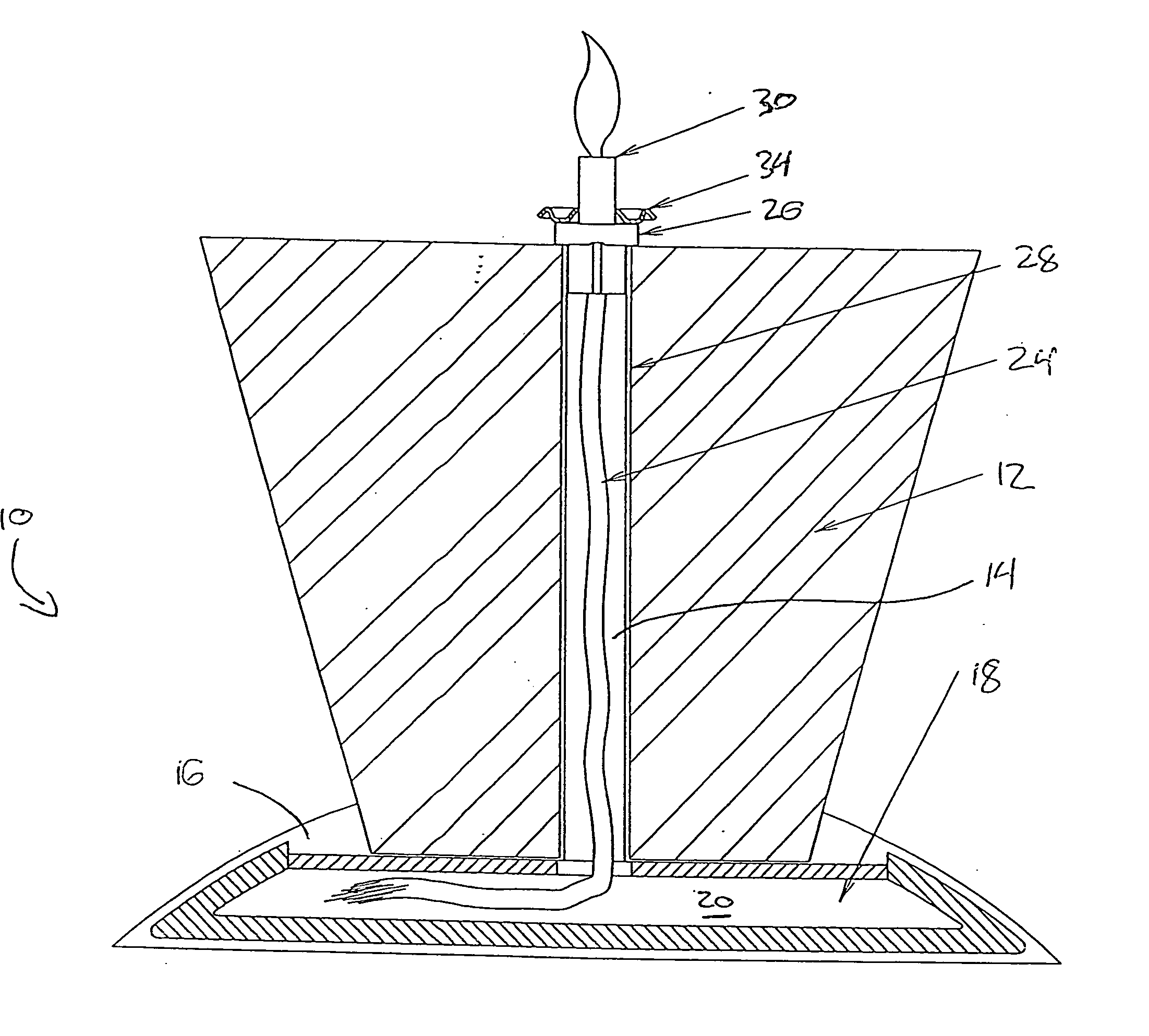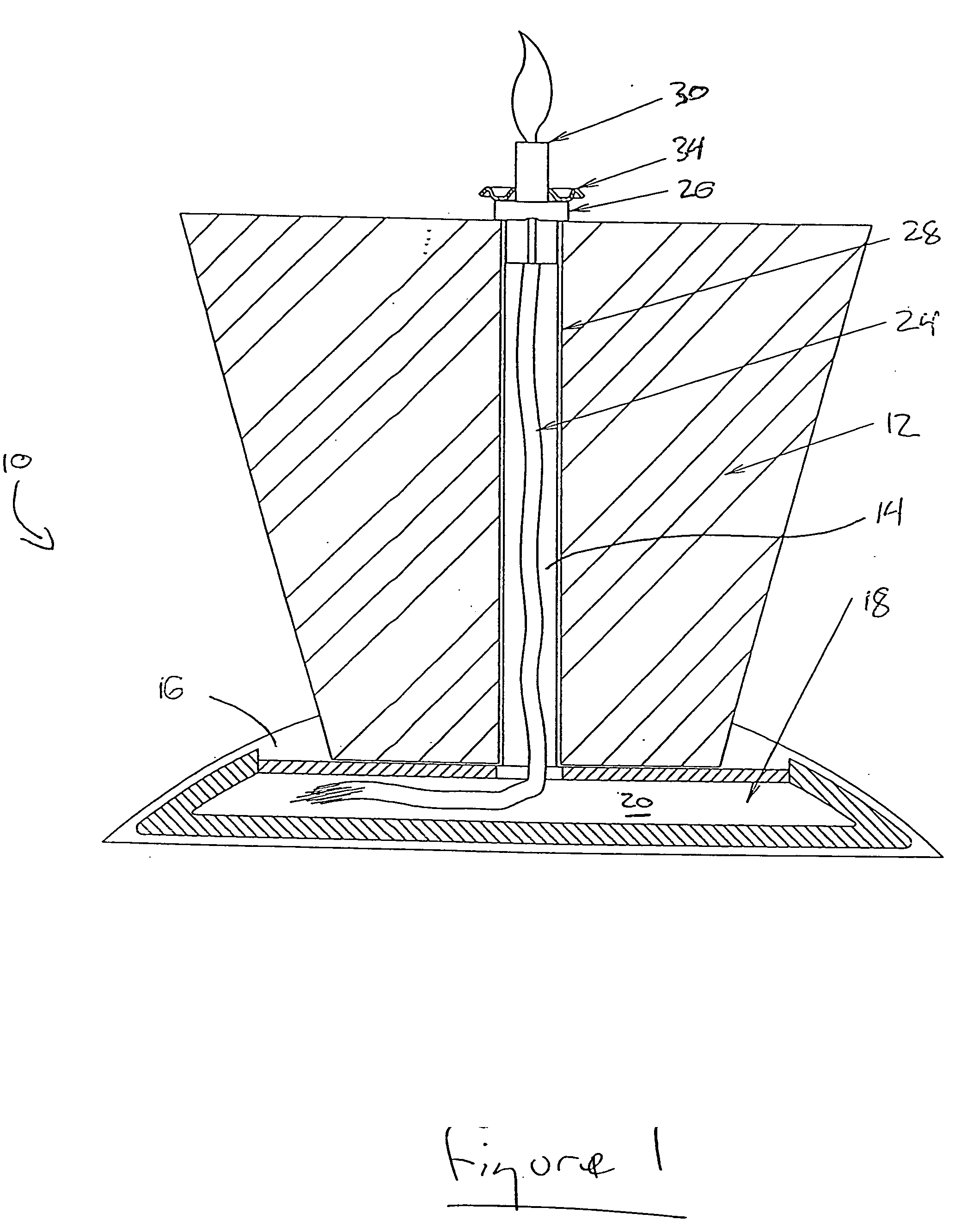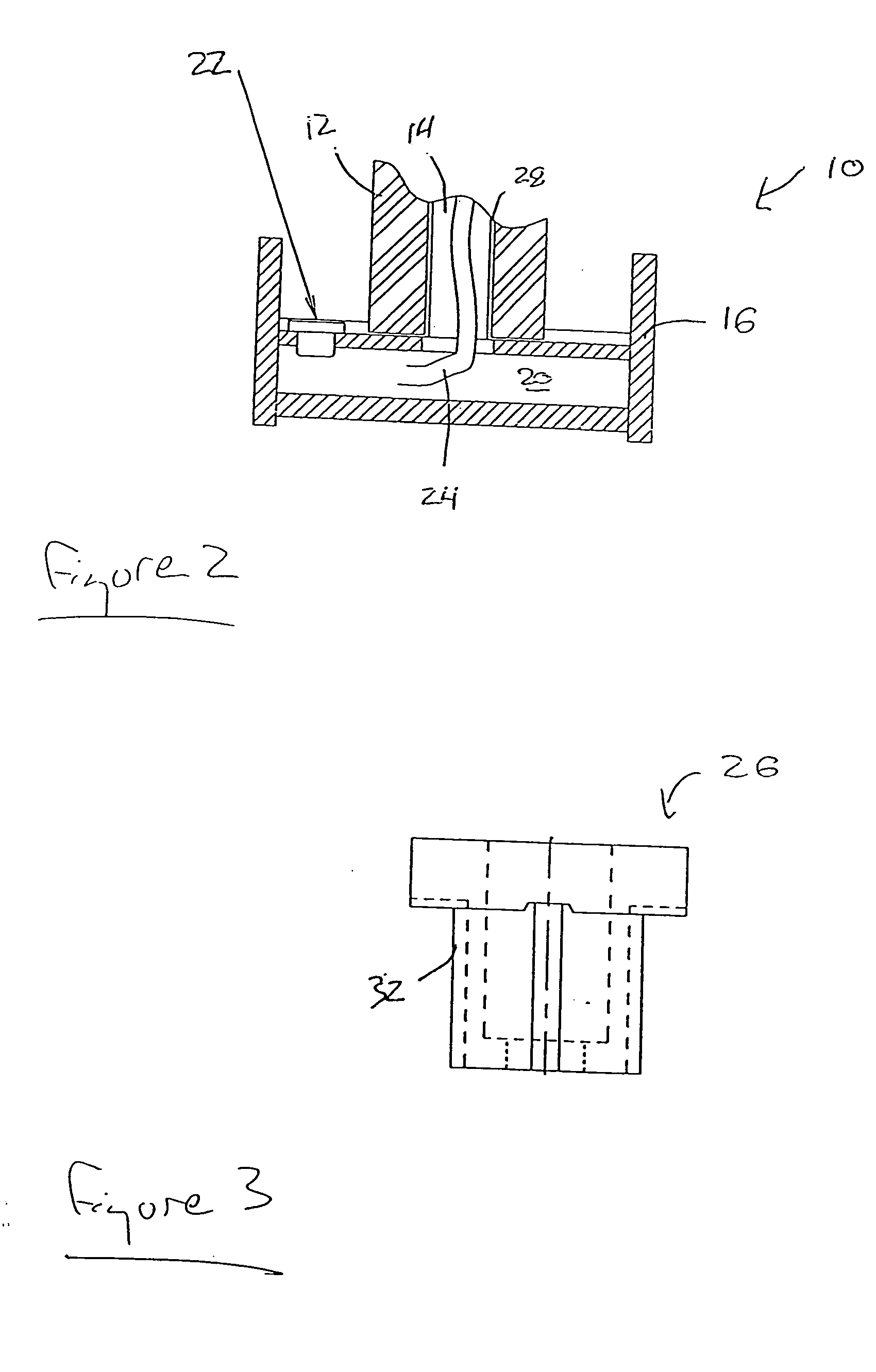Liquid fuel candle
a liquid fuel candle and candle body technology, applied in the field of candles, can solve the problems of difficult to decide whether or not deformation and consumption of the candle itself, and difficulty in deciding whether to light a conventional paraffin or other wax candle, etc., to achieve the effect of enhancing the overall burn time, and reducing the risk of burning
- Summary
- Abstract
- Description
- Claims
- Application Information
AI Technical Summary
Benefits of technology
Problems solved by technology
Method used
Image
Examples
Embodiment Construction
[0015] Referring to the Figures, the liquid fuel candle 10 comprises a wax body 12 defining a hollowed core 14. The wax body 12 is attached releasably or permanently to base 16 at one end of the wax body 12, and the base 16 is formed and dimensioned to resemble a conventional candle holder. Base 16 defines a reservoir 18 within which liquid fuel 20 may be stored, and also includes a re-sealable filling hole 22 in embodiments (as shown) where the wax body 12 and base 16 are permanently attached to one another.
[0016] A wick 24 preferably formed of fibreglass fibres is threaded through hollowed core 14 of wax body 12, and communicates at one end with liquid fuel 20 within base 16. At its second end, wick 24 projects slightly beyond the top of wax body 12, and is there situated within an insulator 26 that prevents wick 24 from contacting the outer surface of wax body 12. Housing 28 separates wick 24 from hollow core 14 of wax body 12 in order to avoid possible contamination of wax body...
PUM
 Login to View More
Login to View More Abstract
Description
Claims
Application Information
 Login to View More
Login to View More - R&D
- Intellectual Property
- Life Sciences
- Materials
- Tech Scout
- Unparalleled Data Quality
- Higher Quality Content
- 60% Fewer Hallucinations
Browse by: Latest US Patents, China's latest patents, Technical Efficacy Thesaurus, Application Domain, Technology Topic, Popular Technical Reports.
© 2025 PatSnap. All rights reserved.Legal|Privacy policy|Modern Slavery Act Transparency Statement|Sitemap|About US| Contact US: help@patsnap.com



